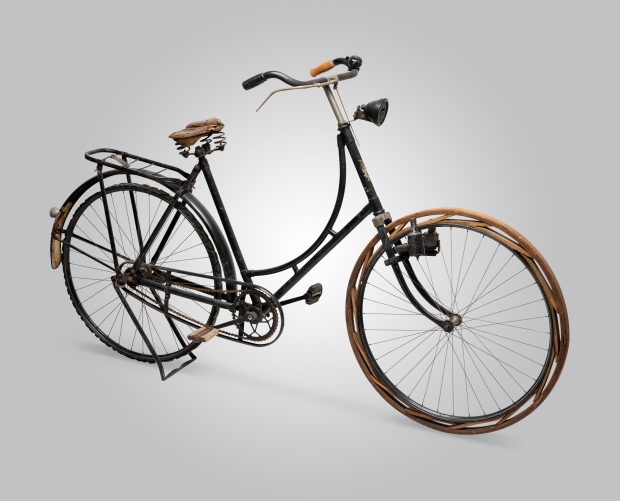 The Dutch are known for their love of bicycles. For most Dutch people it is the first choice of means of transport.
The Dutch are known for their love of bicycles. For most Dutch people it is the first choice of means of transport.
Needless to say, the bicycle played an important role in World War II. There is a long-running joke about the Germans giving back Dutch bikes. The origin came from the German occupiers demanding that all the Dutch men’s bikes be “handed over” to the Germans. In July 1942, in addition to confiscating the bikes, all Jews were forbidden to ride bicycles.

There were some exemptions made for some groups allowed to keep their bikes. Often they would be people working with the Germans or on a farm. The Germans distributed a pamphlet in Amsterdam in relation to those exemptions.

As the end of the war approached, the Germans stole (the majority of) the bicycles to use as either an escape to Germany or a means to surrender to the Allies.

In the later stages, the reprisals of not handing over their bicycles to the German occupiers became more severe. The photograph below shows the notification posted in the town of Heilo stating all bikes were to be delivered to the Town Hall on 9 October 1944 before 15:30. Failure to comply would result in the execution of ten citizens.

The bicycle was a dual purpose for many of the Dutch. It generated power to light their homes during times of power outages.
The German occupier abolished the freedom of the printed press. In response, the establishment of an illegal printing press went into effect. The first prohibited newspapers appeared occasionally. However, the unlawful publications had increased to 1300 by the war’s end.
Creating and distributing these illegal papers was very dangerous and punishable by death. Even having a single copy in your possession could put your life at risk. Along with the growing shortages caused by the war, including paper, these illegal presses also faced other difficulties. Members of the Amsterdam Resistance used a bicycle-powered mimeograph machine to stencil underground newspapers. Most likely from late 1944 when the Germans cut off the electricity more frequently.
(Drawing by Jan Sanders)

Next time you visit the Netherlands and see the millions of bicycles—remember it is not just a means of transportation—but a cultural heritage. People died in order to preserve it.


Donation
I am passionate about my site and I know you all like reading my blogs. I have been doing this at no cost and will continue to do so. All I ask is for a voluntary donation of $2, however if you are not in a position to do so I can fully understand, maybe next time then. Thank you. To donate click on the credit/debit card icon of the card you will use. If you want to donate more then $2 just add a higher number in the box left from the PayPal link. Many thanks.
$2.00
Sources
NIOD
Verzets Museum
Dirk, you might like my friend Aaron’s cycling history site.
https://cyclehistory.wordpress.com
LikeLike
Reblogged this on History of Sorts.
LikeLike